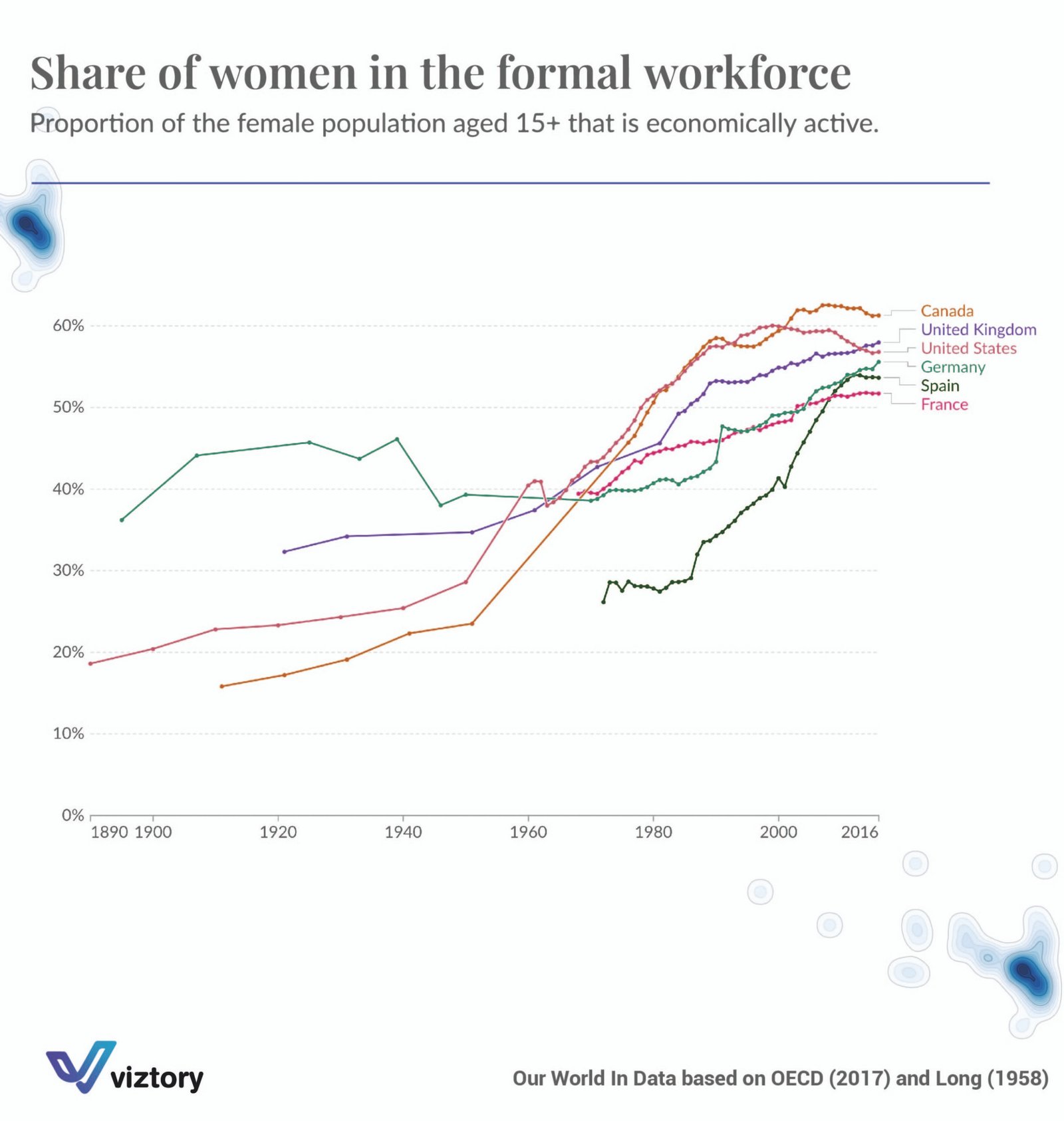The Role of Women in the Formal Workforce and Its Impact on the Healthcare Sector
-
Aug, Thu, 2024
The Role of Women in the Formal Workforce and Its Impact on the Healthcare Sector
Introduction
Women’s participation in the formal workforce has undergone a significant transformation throughout the 20th century and continues to evolve today. The attached image illustrates the development of the percentage of women in the formal workforce across six major countries: Canada, the United Kingdom, the United States, Germany, Spain, and France. This development highlights the increasing role of women in the economy and its impact on various sectors, including healthcare.
General Analysis
The image shows a steady increase in the percentage of women participating in the formal workforce in all the mentioned countries, especially after World War II. The data indicate that these percentages have risen significantly since the 1960s, reaching or exceeding 50% in most countries by the turn of the millennium.
Social and Economic Transformation
This increase reflects significant changes in social and economic structures. Women’s movements, changes in laws, and social policies have all contributed to enhancing women’s rights to work and equal opportunities. Additionally, economic factors played a major role, as rapid economic growth led to increased demand for labor, encouraging more women to enter the workforce.
Impact on the Healthcare Sector
The increased participation of women in the workforce has both direct and indirect effects on the healthcare sector. This impact can be viewed from several angles:
Increased Demand for Healthcare Services: As women enter the workforce in larger numbers, the need for healthcare services has grown, both in terms of family care and work-related healthcare. This requires strong healthcare infrastructure to support this growing segment of working women.
Impact on the Healthcare Workforce: The healthcare sector is one of the largest employers of women. With the increasing participation of women in the workforce, the percentage of women employed in this sector has risen significantly, enhancing the sector’s capacity to meet the growing needs of the population.
Work-Life Balance: The growing number of working women has introduced new challenges related to balancing work and life, necessitating the development of supportive health policies such as maternity and paternity leave, child healthcare, and policies that promote mental health.
Conclusion
The increasing participation of women in the formal workforce represents a fundamental shift in global society and the economy. In the healthcare sector, this shift is reflected in the increased demand for healthcare services and the evolution of the workforce in this sector. It is essential for governments and organizations to continue developing health and social policies to support this positive change and enhance the health of working women, ensuring the continued vital contribution of women to the economy and society.
Final Thoughts
Empowering women and increasing their participation in the workforce is one of the key factors in achieving sustainable and inclusive development. As these trends continue, the healthcare sector is expected to become more adaptable and responsive to the needs of working women, contributing to an overall improvement in the quality of life for all members of society.

